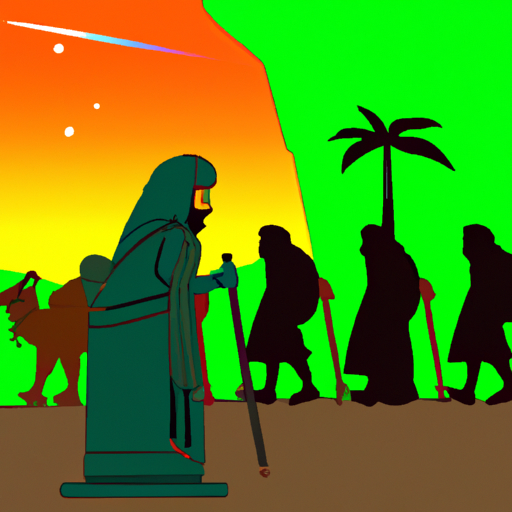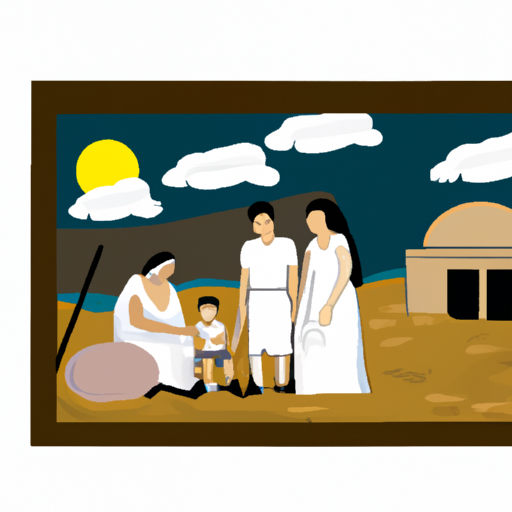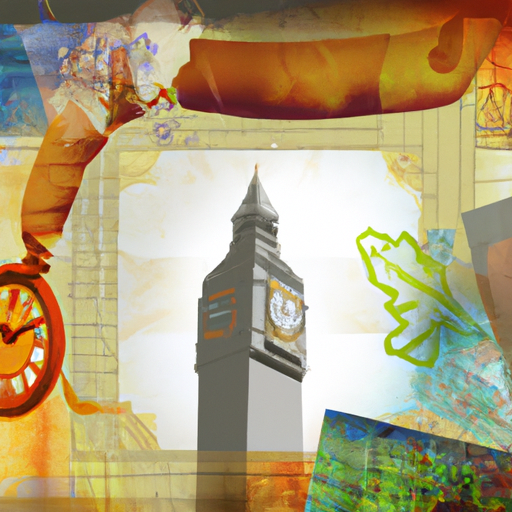Historical Evidence of God’s Wife in Ancient Religions

Mystery has long surrounded the wife of God, yet traces of her powerful sway have remained through the ages. Ancient texts and archaeological finds have intrigued countless generations with their clues to her life and times. Historians have sifted through these pieces of evidence to construct a narrative of her rise to power and prestige.
It appears that she was a figure of significance in both spiritual and political realms, respected by both men and women. She is credited with playing an integral role in some of the most momentous events in history. Her legacy persists today in various forms, from religious observances to cultural customs.
Exploring the past of God’s wife can provide us with a glimpse into an ancient world where female authority was exercised with grace and power. It is a story that will surely continue to enthrall for years to come.
Introduction

No where in the Bible is there even a hint of the notion of a wife for God, nor is it found in any Christian history. This idea can be traced back to ancient polytheistic religions, where deities were believed to be wed together as a representation of the divine feminine. Although this concept has been perpetuated in modern culture through various works of fiction, there exists no proof that it was ever part of Christian belief.
– Historical Evidence of God’s Wife in Ancient Religions
Throughout the ages, there has been a mysterious, unfathomable female presence in ancient religions. From Inanna, the Sumerian goddess, to Isis of Egypt, many cultures have revered gods’ wives or consorts. This piece will delve into the historical evidence of these divine feminine figures and their significance to religious customs and beliefs.
The earliest known god’s wife is Inanna, venerated as part of the Sumerian pantheon circa 2000 BCE. Believed to be the daughter of Nanna, the moon god, and sister to Utu, the sun god, Inanna was attributed with fertility and sexual love in addition to war and justice. She was also viewed as an autonomous deity in her own right – often portrayed with wings or crowned with stars.
In Ancient Egypt, Isis was venerated as mother goddess and mate of Osiris. Linked to healing, sorcery, fertility, parenthood and protection from danger; she had a strong cult following among both commoners and royalty alike. Her worship spread throughout Egypt and into other parts of Africa as well as Greece during its Hellenistic period.
Ancient Greece boasted several goddesses believed to be consorts to Zeus such as Hera, Demeter and Aphrodite. These goddesses were connected to various facets of life like marriage (Hera), agriculture (Demeter) or beauty (Aphrodite). They were also seen as influential forces in their own right who could shape events on earth through their powers over nature or human emotions.
The Hindu tradition also boasts multiple female deities thought to be spouses or consorts to male gods such as Parvati (wife of Shiva) or Lakshmi (wife of Vishnu). These goddesses are usually associated with fertility but can also represent qualities such as compassion or wisdom depending on which deity they are linked to.
It is evident from this brief overview that there is a long history of revering divine female figures in ancient religions across many cultures around the world. The roles these figures played varied from culture to culture but all appear to have been important figures within their respective societies whose presence had an impact on religious beliefs and practices for centuries afterwards.
– Ancient Goddesses Worshiped as God’s Wife
Throughout time, divine female figures have been venerated alongside their male counterparts. In many societies, the goddess was perceived to be the female equivalent of the god, and in some cases even seen as an equal partner in a holy union. The Egyptians honored Isis, the goddess of fertility and motherhood, as the wife of Osiris, lord of death and resurrection; while in Greek mythology Hera was worshiped as Zeus’ spouse and guardian of marriage and childbirth. Her power over him was so great that he had to make pledges to appease her wrath. Norse mythology paints Frigg as Odin’s queen and defender of Asgard, renowned for her intelligence and knowledge which she used to protect her people from danger. Additionally associated with spinning, prophecy, magic arts such as seidr (a form of shamanism), she is still revered today by many who draw strength from her stories about love, protection and fertility.
– The Role of Women in the History of Monotheism
Through the ages, monotheism has been subject to great alteration and evolution, with females taking a noteworthy role. Women have been essential in the formation and spread of monotheistic religions since antiquity, participating in both spiritual and communal life. In Judaism, for example, women were viewed as having similar rights to men in many areas including marriage and divorce. Additionally, Islam gave women particular liberties that weren’t available in other religions during that period, such as the right to own assets. Moreover, Christianity saw women playing a crucial part in propagating the religion through missionary work and evangelism.
Women have also had an immense effect on religious practices and beliefs. They have acted as spiritual guides and educators within their respective faiths, providing guidance to their communities on matters of faith and morality. Various female figures are highly respected among monotheistic traditions for their knowledge; examples include Sarah in Judaism, Fatima in Islam, and Mary in Christianity.
Women have also been instrumental when it comes to introducing new concepts into monotheistic faiths; they have often been at the forefront of movements like reform Judaism or modern evangelicalism which aim to modify traditional beliefs for current times. The contribution of women has undoubtedly been indispensable to the transformation of monotheism over time; without them, our understanding of these religions would be much poorer than it is today.
– The Evolution of the Concept of God’s Wife Through Time
Throughout the ages, the notion of a divine partner has gone through a myriad of transformations – from ancient goddesses to modern female consorts of male deities. In early Mesopotamian cultures, female gods like Ishtar and Inanna were venerated as powerful figures with a variety of roles such as fertility and war. This changed over time, however, as these deities started assuming more subordinate positions in relation to their male counterparts. This evolution was seen in Egypt where Hathor became the wife of Horus and in Greece where Hera was wed to Zeus.
The concept was further developed during Christianity when Mary was proclaimed the mother of Jesus Christ and companion to God. This role was particularly highlighted in the Middle Ages when she was referred to as “the Queen of Heaven” and revered by many Christians. During this period she also began to be seen as an intermediary between humans and God, offering comfort and direction for those who sought it.
At present, there is still much debate regarding whether women can have equal standing with men in spiritual contexts. Some claim that a woman cannot be on par with God because she does not possess divine power or authority over other people while others believe that women should be acknowledged for their spiritual contributions and allowed to partake equally alongside men in religious activities and services.
It is evident that throughout history, the idea of God’s wife has evolved drastically – from powerful goddesses worshipped by ancient civilizations to Christian icons admired during the Middle Ages; each reflecting changing attitudes towards gender roles within society.
– How Cultural and Religious Changes Influenced the Idea of God’s Wife Throughout History
Throughout the ages, the idea of a divine mate for the Supreme Being has been shaped by shifting cultural and spiritual norms. In ancient societies like Egypt, Babylon, and Greece, goddesses were frequently viewed as companions to their respective deities. This is reflected in the mythology of many cultures where goddesses are seen as wives or partners of the gods. For example, in Ancient Egypt, Isis was regarded as the wife of Osiris and a mother-like figure to all other gods and goddesses. Similarly, Ishtar was venerated alongside Marduk in Babylonian culture as his spouse.
In contrast, Judaism and Christianity have no such notion of a female counterpart for God due to their monotheistic beliefs which reject any suggestion of an earthly partner for Him. Instead, these religions focus on human relationships with God through prayer and worship; thus emphasizing spirituality rather than physicality with regards to connecting with Him.
The advent of Islam brought about further changes in how people perceived the concept of God’s wife. Islamic scripture does not mention any female equivalent for Allah but some Islamic scholars have proposed that Allah may have had a consort before Islam known as Umm al-Momineen (the Mother of Believers). Nevertheless, this view has never been accepted by mainstream Muslims who believe that Allah is beyond gender and does not need a companion or associate.
It is clear that over time cultural and religious developments have had a profound effect on how people conceive the idea of God’s wife. While certain ancient civilizations believed in goddesses being consorts to their main deities, monotheistic religions such as Judaism and Christianity dismissed any thought of a divine wife for God while Islam did not accept any proposal that Allah may have had a consort at any point in time.
conclusion

No record has been found to imply that God had a partner in any renowned spiritual system. All through time, God has been perceived as an all-mighty being unconstrained by gender or matrimonial position.
Some questions with answers
Q1. Who was God’s wife in history?
A1. There is no record of God having a wife in any historical texts.
Q2. Is there any evidence of a female deity being married to God?
A2. In some ancient cultures, female deities were worshiped alongside male ones, but there is no evidence of any of these deities being married to each other.
Q3. Are there any religious texts that mention God having a wife?
A3. No, there are no religious texts that mention God having a wife.
Q4. Are there any stories or myths about God having a wife?
A4. Some ancient mythologies do include stories about gods and goddesses marrying each other, but none of these stories involve the Judeo-Christian concept of God and his relationship with humans.
Q5. What is the origin of the belief that God had a wife?
A5. The belief that God had a wife may have originated from the idea that all powerful beings need companionship and love, or it may have been an attempt to explain why certain female deities were worshipped alongside male ones in some ancient cultures.





